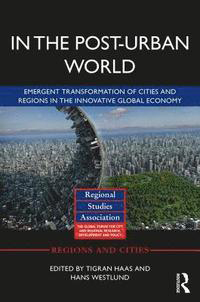Cities for All
Researcher:

The project "Cities for all" takes it starting point in the hypothesis on the "post-urban world", developed in Tigran Haas’ and Hans Westlund’s book "In the Post-Urban World", and in which the following aspects are highlighted:
• Dissolution of the traditional urban-rural dichotomy
• The emergence of polycentric city regions with a mosaic of actors, activities and land use
• The rural areas outside the city regions are becoming less and less important
• The expanding city regions are densified but also enlarged
• The basic driving force is the knowledge economy and its expansion
• New social, economic and spatial gaps emerge in the city regions
The project aims producing a book about the Stockholm region and its spatial and social transformation. Professor Hans Westlund at the Centre for the Future of Places is project leader and Dr. Özge Öner at the University of Cambridge is also engaged in the project. This is the book’s planned table of contents:
1. Introduction.
2. From the Isolated State and its Hinterland to City Networks and their Hinterworlds. Spatial Theory from the Agricultural Era to the Post-Urban Knowledge Economy.
3. Post-Urban City Regions: A research Overview.
4. Choosing the Greater Stockholm Region
5. The Spatial growth of the Stockholm Region: From a City with a Hinterland to a Labor Market Region and its Extension
6. The Spatial Mosaic: Land Use and its Change in the Stockholm Region
7. The Spatial Order of Economic Activities. Location of industries and sectors
8. Labor, its location and movements (commuting)
9. External migration. From where and where to?
10. Internal migration and segregation (after income, education and country of origin)
11. Social Capital in the Neighborhoods. Years of living/inhabitant turnover
12. Public Policy, privatizations and individualization (from public housing to condominiums; choice of schools and elderly care; projects for deprived areas…)
13. The Hinterworld of Stockholm
14. Conclusions and implications for further research

